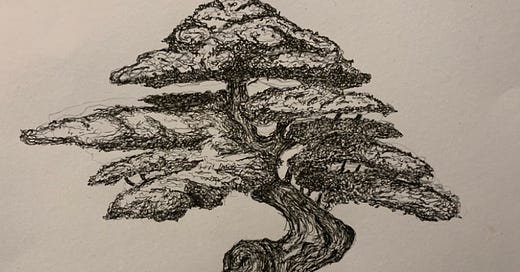The Japanese art of bonsai, growing and shaping dwarf trees in small containers, can be traced back to the ancient Chinese ‘penjing’ from around 600 ad. Some scholars argue the practice began as early as 1000 to 500 bc. The Japanese bonsai can be translated to ‘tree in a pot’, while the Chinese’ pen’ means pot and ‘jing’ means landscape.
Cultural exchanges with China from the late 6th century onwards saw the practice take root in Japan. Imperial embassies and Buddhist students visiting China brought back souvenirs such as container planters and developed their own distinct styles modelled off ‘penjing.’
Bonsai plants were originally a status symbol among the elite. However, during the Kamakura period (1185-1333) in Japan, Buddhist monks cultivated bonsai as a meditative practice as a tool for contemplation. Ideas of simplicity, harmony and balance have since become intrinsically linked to bonsai, while bonsai have long since become available to people of all social classes.
The art of bonsai and styles evolved over time. In the Edo period (1603-1868), bonsai cultivation techniques became more refined and structured, with various styles developed, such as formal upright (chokkan), slanting (shakan), cascade (kengai), and windswept (fukinagashi).
By the 20th century, the bonsai gained international recognition with the practice adopted globally. The art form remains popular worldwide, with magazines and competitions dedicated to bonsai.




